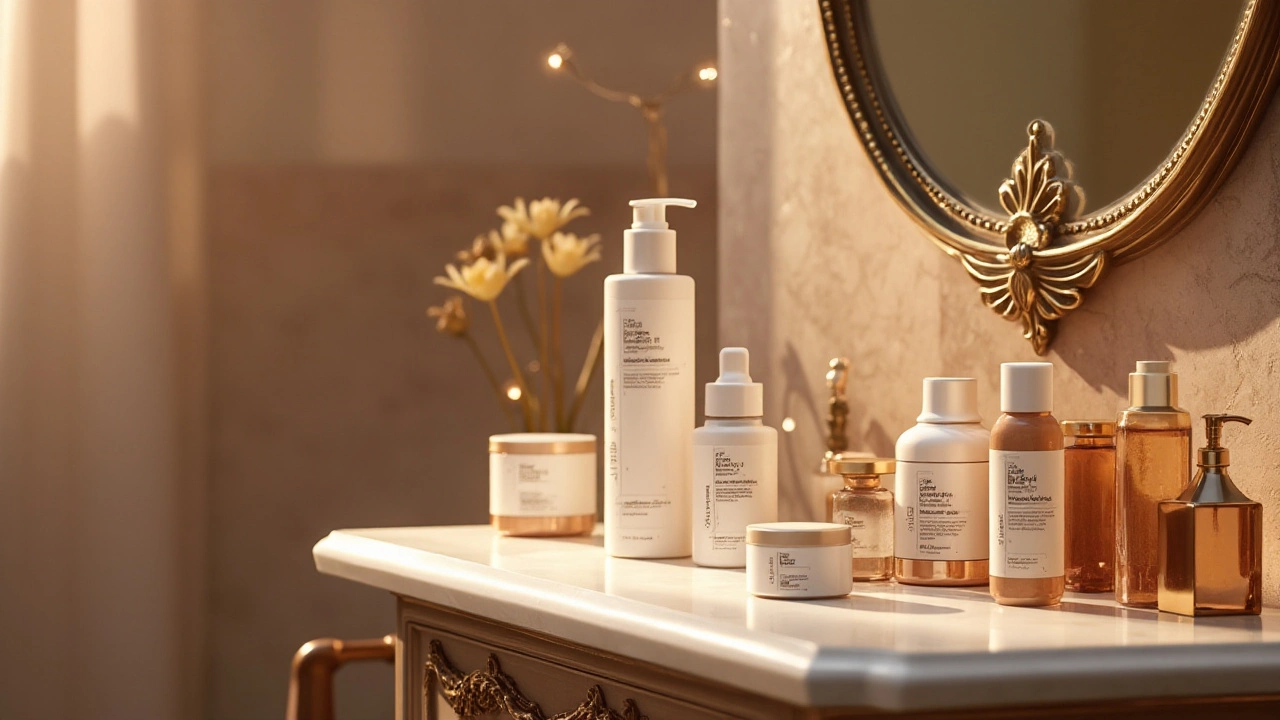Medical Grade Skincare: What It Is and Why It Matters
When you see "medical grade" on a bottle, you probably think it’s something only doctors use. In reality, it just means the formula is stronger, the ingredients are at higher concentrations, and a dermatologist helped develop it. That extra punch can make a big difference for things like wrinkles, acne, or hyperpigmentation.
Most over‑the‑counter creams stay below a certain strength to avoid irritation. Medical‑grade products push past those limits, so they can deliver results faster. The trade‑off is that you need to be a bit more careful—always patch test and follow the directions.
How to Spot True Medical‑Grade Products
First, look for a dermatologist’s name or a clinical study reference on the packaging. Real medical‑grade lines will list active ingredient percentages (like 2% retinol or 5% niacinamide) instead of vague “high‑strength” claims. If the label mentions it’s prescription‑only in some countries, that’s another clue.
Second, check the ingredient list. You’ll see proven actives such as peptides, growth factors, or stabilized vitamin C. Cheap copies often replace these with fillers or fragrance, which can dilute the effect.
Finally, consider the price. Medical‑grade doesn’t automatically mean expensive, but you’ll usually pay more than for a regular drugstore cream because the formulation and testing cost more.
Getting the Most Out of Medical‑Grade Skincare
Start slow. Use the product every other night for the first two weeks, then move to nightly if your skin tolerates it. Pair it with a broad‑spectrum sunscreen—many potent actives can make your skin more sensitive to UV rays.
Layering matters. Apply lighter, water‑based serums first, then thicker creams. If you’re using a retinoid, let it absorb for a minute before adding a moisturizer to lock in hydration.
Don’t forget the basics. Even the best medical‑grade formula can’t fix a lack of cleansing or irregular sleep. Keep your routine simple: cleanse, treat, moisturize, protect.
Our tag page pulls together the most useful articles on this topic. Want a deep dive into anti‑aging science? Check the “What Is the Holy Grail of Anti‑aging?” guide. Curious about natural ingredients that also meet medical standards? The “Best Natural Products for Skin (2025)” post breaks it down. Each article gives practical tips you can add to your routine right away.
Bottom line: medical‑grade skincare can give you faster, clearer results, but it works best when you understand the product, start gently, and keep your skin protected. Give one product a proper trial, track how your skin reacts, and you’ll see whether the extra potency is worth it for you.
Is CeraVe Medical Grade? Unraveling Professional Skincare
CeraVe, a popular skincare brand, often raises the question of whether it qualifies as medical grade. Understanding what 'medical grade' means is key to addressing this. While CeraVe is not technically medical grade, it is formulated with dermatologist-approved, beneficial ingredients. This article explores the effectiveness of CeraVe and its place in skincare routines.
Top Medical Grade Skincare Lines for Optimal Skin Health
Medical grade skincare lines have become increasingly popular among those seeking effective, science-backed solutions for better skin health. These products are formulated with high-quality ingredients designed to penetrate deeper layers of the skin. This guide explores the best skincare lines that offer medical-grade formulas, supporting various skin concerns such as aging, acne, and discoloration. Learn how these solutions can provide visible results and enhance skin appearance.

